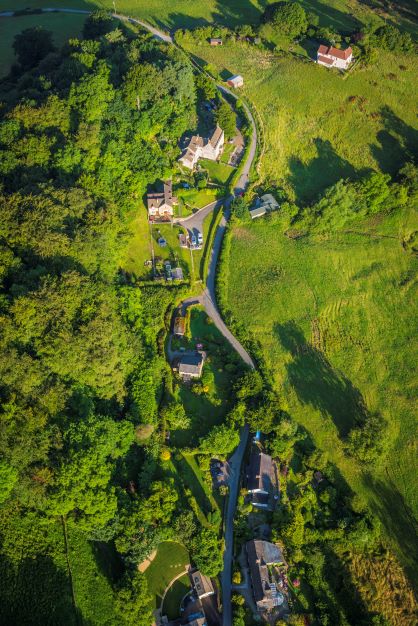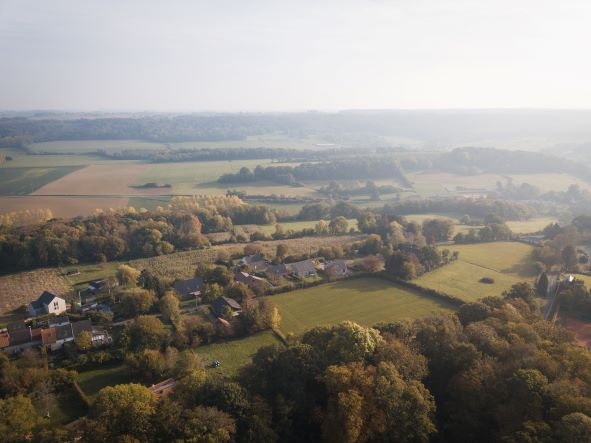Planning for success
Changes to planning policy outlined in the Queen’s Speech on 10th May were more modest than the wholesale reform proposed in 2020. Landowners seeking to create value and build a sustainable legacy have a great opportunity to do that under the current (and evolving) planning system, but it requires careful planning and early engagement, says Roland Brass, a rural planning specialist at Knight Frank
8 minutes to read
The government has made a great deal of its desire to reform planning from the ground up, and its ambitions are clear.
The Queen’s Speech setting out the Government's new legislative agenda did include suggested policy changes, many of which we will come to. However, the agenda can be viewed broadly as a recommitment to the plan-led approach that has dominated planning policy for many years. Any changes that are to be made are due to be implemented via the National Planning Policy Framework and a new set of National Planning Policies.
Planning for the future
The original overhaul of the planning system, first outlined in the 2020 white paper Planning for the Future, set out a “once-in-a-generation” reform. The main objectives were to modernise and speed up the planning system and to provide more certainty. Those ambitions still hold, but the methods will be less radical largely due to pushback from the Conservative back benches.
Among the most radical proposals to have been dropped is land use zoning. That, in our view, is positive in a rural context. We believe the approach would have had significant implications for rural landowners as the proposals sought to designate land for either growth, renewal or protection. In our mind, this is not possible.
The planning process, in reality, is much more complex and requires flexibility to adapt to changing market dynamics, infrastructure requirements and land ownership over time.
Other proposals are being implemented, particularly those relating to design and beauty, and sustainability, climate change and digitisation. Proposals are also in train to develop an infrastructure levy to replace some of the more drawn-out elements of Section 106 such as affordable housing and the funding of local infrastructure needs.
Though the merits of building on the green belt have been hotly debated for years, there remains an extremely high bar to progress projects in green belt locations. A unique, robust and evidenced case for development is required, though it can be achieved under “very special circumstances” for planning applications and “exceptional circumstances” for Local Plan allocations.

Levelling up
The Levelling Up and Regeneration Bill now forms the core of the government’s legislative agenda. It serves one of the two core electoral themes – levelling up the UK, and delivering an economic positive out of Brexit.
The Bill (at over 300 pages in length) provides details that will now be discussed in parliament. The direction of travel is clear. There is a drive to ensure growth across the country, which will benefit landowners in all regions, not just those regions in the south that have often been the focus of a push to boost housebuilding. There is also a commitment to growing science, innovation and agri-business and securing energy production security. In our mind, levelling up means “opportunity everywhere”.
The recommitment to the plan-led approach means landowners have a great opportunity to promote and supply land to local authorities as part of the planmaking process. Early engagement remains key. There are myriad steps to feeding land into the system, which we outline overleaf, but the first should be a planning appraisal. Most sites offer some form of future development potential, and a planning appraisal is a great way to initially identify and assess any opportunities.
From planning strategy to development
In a nutshell, there are two potential approaches to pursue to achieve development. The first is a planning application approach, which aims to achieve planning permission for development; the second is a site promotion approach, which aims to establish the principle for development by achieving a site allocation in a new Local Plan.
Both approaches need to be carefully considered in respect of the site opportunity, as every site is different. It is also possible to combine the two approaches.
Unless there is an immediate development opportunity, the land promotion approach is usually encouraged.
This is largely because most rural sites are generally greenfield in nature, located outside existing settlements, and often subject to other ecological, environmental or landscape designations.
The planning application approach could be pursued for smaller-scale opportunities relating to redevelopment or conversion of existing buildings, or on less constrained land. Such sites might carry a lower planning risk, especially if they are located adjacent to the existing settlement. This means that such a site might contribute towards sustainable patterns of development or be considered a brownfield site.
In terms of timescales, the planning application approach is shorter term while the site promotion approach is longer because it can take many years to produce a Local Plan.
Understanding the plan-led system
The government has made it clear that it continues to support the plan-led system, which is positive. Local Plans will continue to guide growth and development. However, we know that the plan-making system is inefficient, with a Local Plan taking on average seven years to make.
Despite government stating that plans must be up to date by December 2023, only half of local planning authorities (LPAs) have an adopted Local Plan. The impact is a stalling of land supply for new development and a constant battering of LPAs for lack of delivery, which can create opportunities to secure planning at appeal.
The government now wants Local Plans to be prepared and adopted within 30 months and to be refreshed every five years. They intend to replace some generic policymaking with national policies, but it is not clear where the additional resource and incentive to speed up the process will come from.
In truth, the government has limited influence in driving the adoption of Local Plans, as their progress is often driven by local political will. They can in theory place an LPA in “special measures” and have the planning inspectorate take on the plan making function, but this creates political issues as many of the LPAs failing to deliver new development are Conservative-run administrations.

Case studies
Rural portfolio management
We are providing planning and property advice in respect of rural (and urban) sites as part of larger portfolios or on an individual site-by-site basis across the country. Some sites are located in the Green Belt and others in the countryside (beyond the Green Belt) and therefore planning risk is generally higher. Our work to date has been to undertake a strategy development and risk assessment and identify short- and long-term opportunities, and then respond to the plan-making process appropriately by engaging with planning officers and/or preparing and submitting representations. Our goal is to achieve site allocations for future development to de-risk and add value.
Sustainable village extension (700 new homes)
Working on behalf of a national housebuilder, who has an agreement on agricultural land in Kent, we are preparing a planning application for a 700-unit village extension. The site has been identified for growth in the emerging Local Plan, and our representations to the council have sought to protect this policy position. The landscape-led proposals also include a primary school and community facilities and are designed to be well integrated with the existing settlement. The site also lies within a Neighbourhood Plan area so engagement with the parish council and local community has been an important element of the planning and design process.
Solar farm and rural industrial estate
Working on behalf of a private landowner in Sussex, we are seeking to expand an existing industrial estate alongside providing a new solar farm. This approach to future development at the site aims to ensure that the benefits of the proposals outweigh any harm, especially in respect of the council’s ambition to achieve zero carbon development. The proposals have been well received by planning officers to date and we aim to progress our vision by ensuring that new commercial premises are provided to meet local needs.
Planning application for new homes
Working in the Cotswolds on an agricultural site, we achieved detailed planning permission for 250 new homes. As a result of our robust planning case for development, and engagement with the council and other stakeholders, we achieved a significant increase over the original Local Plan allocation for the site of 131 homes.
Planning appraisals to add value to sales
We undertake a number of planning appraisals to assist the marketing process when land and properties are put on the market for sale. Our work aims to provide a clear and straightforward summary of the development potential of the site, setting out a strategy for how development might be achieved over time. This document forms part of the particulars for all potential purchasers to review and in our experience it can have a positive impact on sale prices as it seeks to help realise hope value.
Land promotion through Local Plan and Neighbourhood Plan
Working on behalf of a landowner, we are promoting a green belt site in Essex for development. Our preferred option is residential-led development, including affordable housing, and we are also considering accommodation for the older population in addition to opportunities for renewable energy or sport and leisure activities, while achieving environmental benefits and highways improvements. Following close collaboration with the council and parish council, we achieved a draft allocation for around 200 new homes in the form of a sustainable village extension.
Development and conversions
Working on behalf of private landowners, we have secured barn conversions (under Class Q) to residential and commercial uses in Bath, Somerset and west Berkshire. This form of permitted development allows for the conversion of rural buildings, and restricts conversion to 465 sq m for residential uses. We have also submitted a range of other planning applications and gained certificates of lawful use to establish the use class of buildings with local authorities.
Photo by Chris Linnett on Unsplash